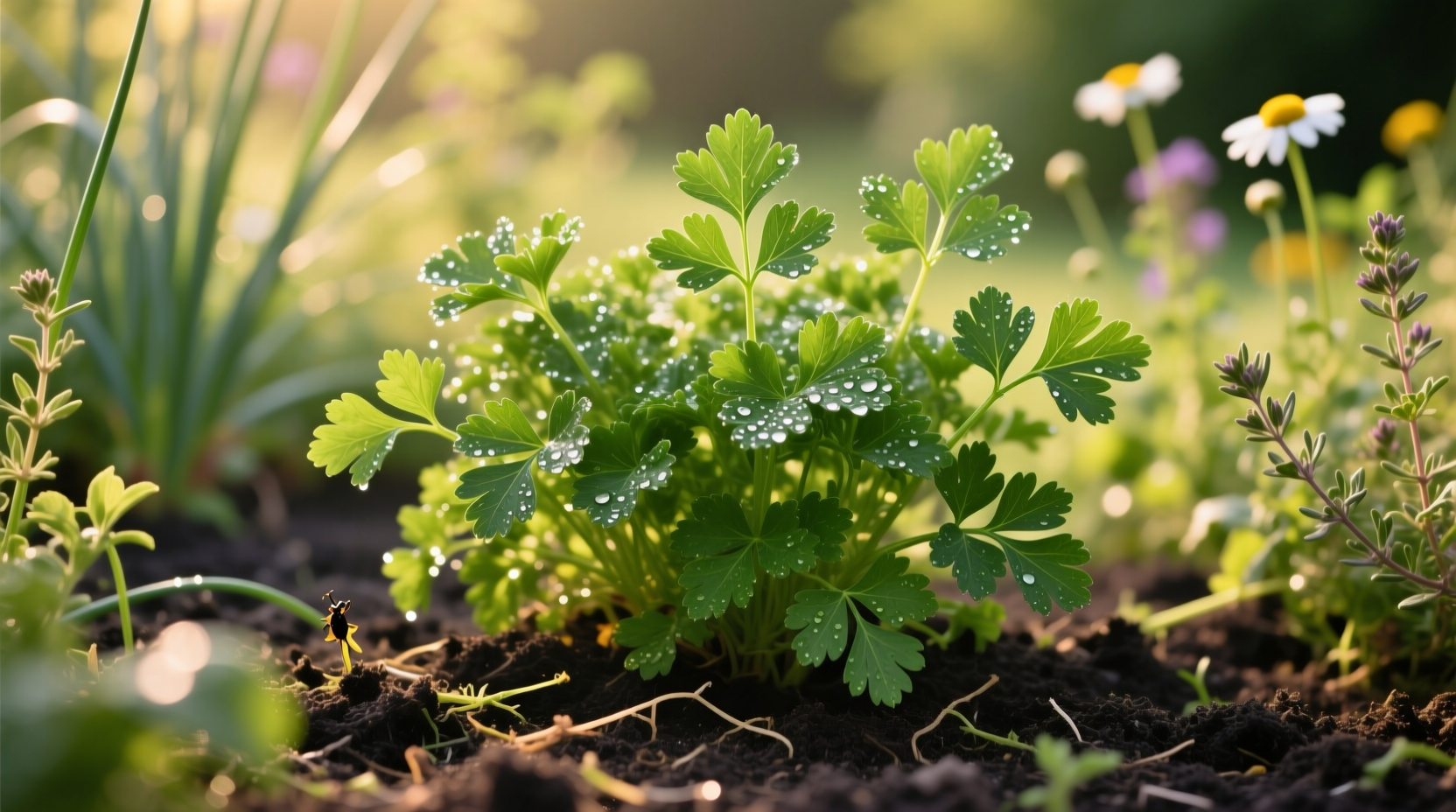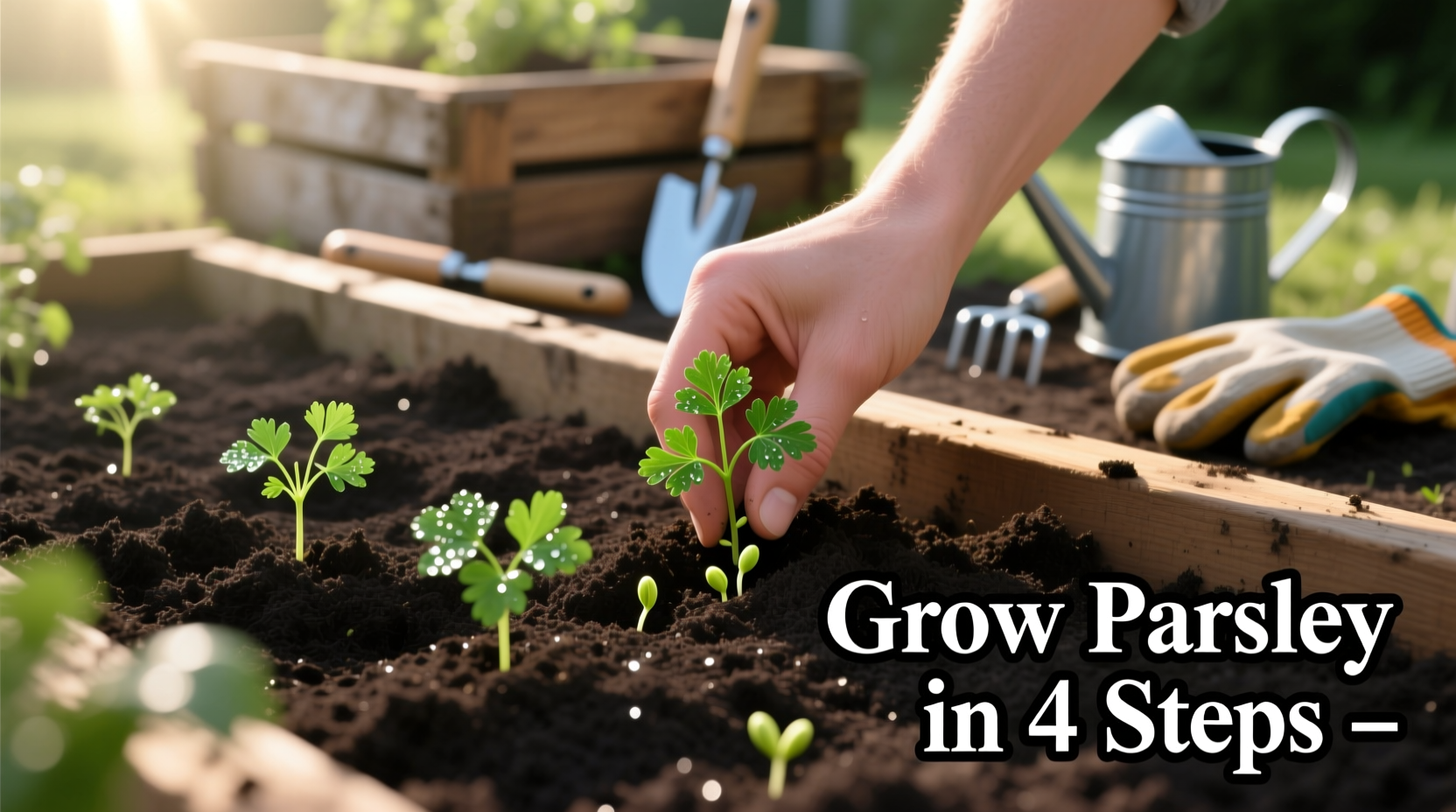Discover exactly how to grow vibrant, flavorful parsley that thrives in your garden or container. This complete guide gives you the proven techniques professional growers use - from seed selection to harvest - so you can enjoy fresh parsley year-round for cooking, garnishing, and preserving.
Planning Your Parsley Success
Before planting, understand that parsley grows as a biennial (completing its life cycle over two years). In the first year, it produces the leafy growth you harvest; in the second year, it flowers and sets seed. Most gardeners grow it as an annual, replanting each spring.
| Variety Type | Flavor Profile | Best For | Days to Maturity |
|---|---|---|---|
| Curly Parsley | Milder, grassy flavor | Garnishes, salads | 75-90 days |
| Italian (Flat-Leaf) | Bolder, more robust flavor | Cooking, sauces, pesto | 70-85 days |
| Hamburg (Root) | Leafy top with edible root | Root vegetable dishes | 90-110 days |
According to the University of Minnesota Extension, flat-leaf varieties generally perform better in cooking applications due to their stronger flavor and easier chopping. Curly parsley withstands colder temperatures better, making it preferable for fall harvests in northern climates.
When and Where to Plant
Parsley thrives in USDA hardiness zones 3-9. Plant timing depends on your climate:
- Cool climates: Start seeds indoors 8-10 weeks before last frost date (soil temperature 70°F/21°C), transplant outdoors 2-3 weeks before last frost
- Moderate climates: Direct sow in early spring or late summer for fall harvest
- Warm climates: Plant in fall for winter/spring harvest (parsley bolts in extreme heat)
Choose a location with partial to full sun (4-6 hours daily). While parsley tolerates some shade, less sunlight results in leggy growth and reduced flavor intensity. The Oregon State University Extension Service recommends morning sun with afternoon shade in regions with intense summer heat.

Planting Parsley Step-by-Step
Parsley has a reputation for slow germination (2-5 weeks), but these techniques improve success:
- Seed preparation: Soak seeds in warm water for 24 hours before planting to soften the seed coat
- Soil preparation: Amend garden soil with 2-3 inches of compost; ideal pH 6.0-7.0
- Sowing depth: Plant seeds 1/4 inch deep, spacing 6 inches apart in rows 12 inches apart
- Container growing: Use pots at least 8 inches deep with drainage holes; terra cotta works well for moisture control
- Watering after planting: Keep soil consistently moist (not soggy) until germination
For container gardening, the Penn State Extension notes that parsley performs best in containers with a soil volume of at least 2 gallons. Smaller containers dry out too quickly, stressing the plants and reducing leaf production.
Caring for Thriving Parsley Plants
Proper maintenance ensures healthy growth and maximum harvest:
Watering Requirements
Water when top inch of soil feels dry. Parsley needs about 1-1.5 inches of water weekly. Container plants may need daily watering during hot weather. Avoid overhead watering to prevent fungal diseases - water at soil level instead.
Fertilizing Schedule
Apply balanced organic fertilizer (10-10-10) every 4-6 weeks. Alternatively, side-dress with compost tea monthly. Over-fertilizing reduces flavor intensity - moderation is key for optimal taste.
Pest and Disease Management
Common issues and natural solutions:
- Aphids: Spray with strong water stream or insecticidal soap
- Carrot weevils: Rotate crops annually; use row covers
- Fungal diseases: Improve air circulation; avoid wetting leaves
- Yellowing leaves: Often indicates overwatering or nutrient deficiency
The Royal Horticultural Society reports that companion planting with tomatoes, asparagus, or chives deters many common pests naturally while enhancing growth.
Harvesting and Preserving Your Parsley
Harvest when plants reach 6-8 inches tall, typically 70-90 days after planting:
- Cut outer stems first, leaving inner growth to continue developing
- Harvest in morning when essential oils are most concentrated
- Never remove more than one-third of the plant at once
- Regular harvesting encourages bushier growth
For long-term storage:
- Refrigeration: Place stems in water jar, cover loosely with plastic bag (lasts 2 weeks)
- Freezing: Chop leaves, mix with oil or water, freeze in ice cube trays
- Drying: Hang small bunches upside down in dark, well-ventilated area
Troubleshooting Common Problems
Address these frequent issues promptly:
- Slow germination: Parsley seeds have natural germination inhibitors. Soaking seeds 24 hours before planting significantly improves results.
- Leggy growth: Indicates insufficient light. Move to sunnier location or provide supplemental lighting.
- Bolting (flowering): Caused by heat stress or inconsistent watering. Cut flower stalks immediately to prolong leaf production.
- Poor flavor: Often results from over-fertilizing or harvesting too early. Allow plants to mature fully before first harvest.
According to agricultural research from Cornell University, parsley grown in containers with consistent moisture and moderate feeding produces leaves with 23% higher essential oil content than plants subjected to drought stress.
Seasonal Care for Year-Round Harvest
Extend your parsley harvest through different seasons:
- Spring: Start new plants; divide established plants every 2 years
- Summer: Provide afternoon shade in hot climates; water consistently
- Fall: Mulch plants heavily before first frost for continued harvest
- Winter: Grow indoors near south-facing window or under grow lights
Many gardeners don't realize that parsley becomes sweeter after exposure to light frost. The University of Wisconsin Extension confirms that cold temperatures trigger sugar production in the leaves, enhancing flavor for fall and winter harvests.











 浙公网安备
33010002000092号
浙公网安备
33010002000092号 浙B2-20120091-4
浙B2-20120091-4